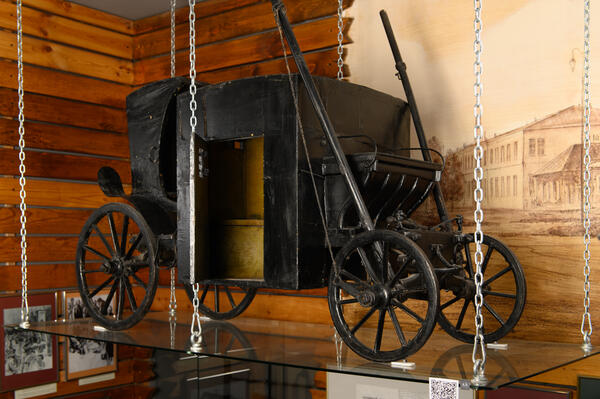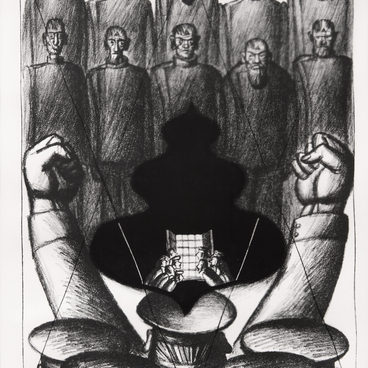The exhibition includes the replica of a black convict carriage. It was used to transport criminals of noble descent to a penal servitude site in Siberia (prisoners of modest backgrounds had to walk on foot). It is a closed carriage on four wheels consisting of three compartments. The front open compartment named high-bench is for a lasher (yamshchIk). The main compartment, which is the closed cabin, consists of two parts with side doors that have barred windows. The cabin is designed for two convicts. The back compartment is for guards escorting the carriage.
The site of imprisonment was reached along the Moscow-Siberian highway from Moscow to KyAkhta (a settlement on the Chinese border). Having an estimated length of 11,000 kilometers, it was the world’s longest overland road. The Siberian Route was dubbed “chained road, ” “prison road, ” or “penal road.” In 1790, Alexander RadIshchev, the author of Journey from St. Petersburg to Moscow, traveled in a convict carriage to the IlImsk exile along the Siberian tract. Between 1826 and 1828, 52 Decembrists sentenced to imprisonment and exile were transported along the Route.
January 1850, members of the PetrashEvsky Circle, including FyOdor DostoEvsky, followed the Siberian Route on their way to exile. Like other convicts, the writer was transported in an open carriage and escorted by guards. Years later, he described his journey in a letter to his brother Mikhail, “Do you remember how we parted with you, my dear, my dear, my beloved? You left me, they took three of us, Durov, Yastrzhembsky and me to get shackled <…> Then they put us in open carriages, each one separately, with a guard. So, in four carriages, with sergeant major in front, we started off from Petersburg. <…> I was pinched with cold and could hardly warm myself indoors. But, miraculously, the road recuperate me completely <…> It was sad crossing the Urals. Horses and carriages got stuck in the snow. The snowstorm was whirling We got off the carriages in the middle of the night and waited until the carriages were pulled out. It was snowing all aroung, we were at the border of Europe. There was only Siberia in front and our obscure lives in it. I was feeling sad, I started to cry <…> On January 11 we came to Tobolsk…”



